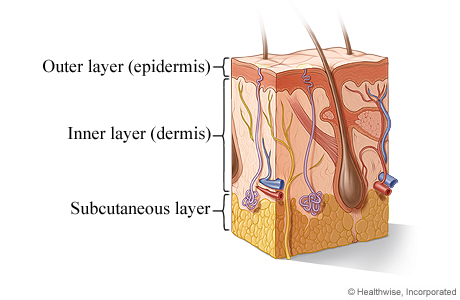Jump to
Bruise (Contusion of the Skin)

Bruises (contusions) occur when small blood vessels under the skin tear or rupture, most often from a twist, bump, or fall. Blood leaks into tissues under the skin and causes a black-and-blue color that often turns purple, red, yellow, and green as the bruise heals.
How can you care for your child's bruises?
- Give pain medicines exactly as directed.
- If the doctor gave your child a prescription medicine for pain, give it as prescribed.
- If your child is not taking a prescription pain medicine, ask the doctor if your child can take an over-the-counter medicine.
- Do not give your child two or more pain medicines at the same time unless the doctor told you to. Many pain medicines have acetaminophen, which is Tylenol. Too much acetaminophen (Tylenol) can be harmful.
- Put ice or a cold pack on the area for 10 to 20 minutes at a time. Put a thin cloth between the ice and your child's skin.
- If you can, prop up the bruised area on pillows as much as possible for the next few days. Try to keep the bruise above the level of your child's heart.
Bruises in children: When to call
Call your doctor now or seek immediate medical care if:
- Your child has signs of infection, such as:
- Increased pain, swelling, warmth, or redness.
- Red streaks leading from the bruise.
- Pus draining from the bruise.
- A fever.
- Your child has a bruise on the leg and signs of a blood clot, such as:
- Increasing redness and swelling along with warmth, tenderness, and pain in the bruised area.
- Pain in the calf, back of the knee, thigh, or groin.
- Redness and swelling in the leg or groin.
- Your child's pain gets worse.
Watch closely for changes in your child's health, and be sure to contact your doctor if:
- Your child does not get better as expected.
©2011-2025 Healthwise, Incorporated
The content above contains general health information provided by Healthwise, Incorporated, and reviewed by its medical experts. This content should not replace the advice of your healthcare provider. Not all treatments or services described are offered as services by us. For recommended treatments, please consult your healthcare provider.
